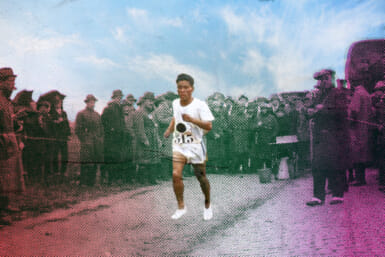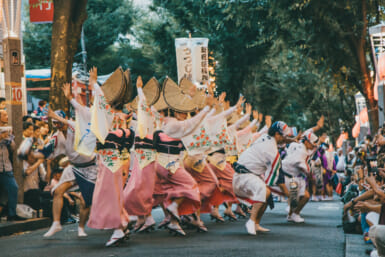When Granite Falls opened its first public restroom this summer, the whole town went potty.
Vendors in the rural town of 2,000 in Washington State’s Snohomish County “sold outhouse T-shirts and commemorative rolls of toilet paper,” reported the July 16 issue of the Seattle Times. Commode-themed works of art were unveiled, a ceremonial strip of t.p. was cut, and Mayor Rella Morris presided over the festivities in a robe of bathroom tissue, wielding a plunger like a scepter.
About an hour away from Granite Falls, in the middle of Lake Washington, is an island community we’re pleased to think of as our second home. From this sylvan vantagepoint, we’ve been privileged for the past several years to witness numerous examples of Japan’s ever-strengthening influence over Washington State. Kumon schools pop up almost as fast as dot.com start-ups, stores specializing in Japanese comestibles continue to expand in size and number, and now it appears that Washingtonians are getting their heads straight about the subject of heads.
Unlike the rather more puritanical Americans, the Japanese have not been shy about celebrating the importance of the loo. They’ve even designated Nov. 10 as Toilet Day, the avowed purpose of which is to encourage even greater awareness of those facilities designed for and used by the general public. Tours have even been organized to show off various super bowls.
Seasoned tourists know all too well that the beauty of a public toilet is almost always inversely proportional to that of the scenic area in which it is located. But officials in Ito City, Shizuoka Prefecture, rewrote this equation with a vengeance in the late ’70s when they began refurbishing public toilets in scenic portions of the city’s suburbs.
By the mid-’80s, six spruced-up Johns, bearing such poetic names as Shiosai No Chozu Dokoro (The “Sound of Waves” Handwashing Location) rated their own tour— the Kawaya Meguri (or, roughly, Outhouse Pilgrimage).
Manufacturers have introduced toilets with reshaped bars and hide-a-cribs. A powder room in Nara Park made headlines when it began serving patrons green tea. In 1989, the comfort stations at Tokyo’s Koiwa Station were installed with phones, presumably for use by users who wanted to tell friends how impressed they were that the toilet seats here could be covered by protective vinyl simply by pressing a button. And thanks to Hatsuko Matsunaga, walls of public toilets may now be regarded as potential canvases, rather than as telephone directories for the desperately horny.
A quarter of a century ago, Matsunaga became, in her description, the world’s first designer and painter of toilet murals. In 1974, while working at an architectural design firm, she accepted the suggestion of a superior that she paint the walls of a toilet at a kindergarten, whose construction her company had supervised.
When kindergartners began going to the toilet the first thing in the morning to inspect the work she had done during her off-hours the night before, Matsunaga realized how much joy her murals could give others. Since deciding to design and paint them full time, she has completed toilet murals at some three dozen locations nationwide, including Japan Railways’ Yokohama Station and the Obihiro Shopping Center in Hokkaido. Photos of her work have been exhibited at a gallery in Kawasaki; a self-penned book about her designing and painting experiences was published four years ago.
Says she, “People are so busy nowadays, but I hope my painting will serve to remind them how important it is to slow down and relax.” Or, as some would put it, to sit down and get a load off.









